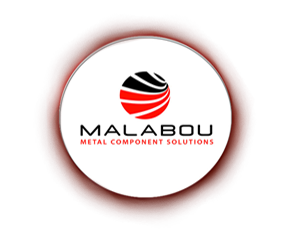Unlocking the Benefits of Converting a Welded Fabrication into a Casting
In today’s competitive manufacturing environment, the shift from complex multi-piece weldments to monolithic castings offers compelling advantages—spanning cost-efficiency, design flexibility, material choice, weight reduction, and enhanced stiffness, especially in scalloped areas. At Malabou, we specialise in guiding OEMs through this smart transition—and here’s why it’s a game-changer:
CostSavings
Welded assemblies often involve high labour costs, multiple fabrication steps, and extensive machining.
 In one case, converting a six-piece weldment to a monolithic casting cut costs by 60%, while freeing up 71 minutes of shop capacity per unit.
In one case, converting a six-piece weldment to a monolithic casting cut costs by 60%, while freeing up 71 minutes of shop capacity per unit.
 Another client reduced part cost by 30%, improved dimensional stability, and freed up fabrication floor space by switching multiple weldments into a single casting design.
Another client reduced part cost by 30%, improved dimensional stability, and freed up fabrication floor space by switching multiple weldments into a single casting design.
DesignFlexibility
Monolithic castings unleash geometric creativity—allowing smooth transitions, organic shapes, and strategic material placement that weldments can’t achieve.
 Designers can craft optimised shapes that enhance strength where needed and eliminate complexity where it's not.
Designers can craft optimised shapes that enhance strength where needed and eliminate complexity where it's not.
 Casting delivers superior flexibility in incorporating functional features, logos, part numbers, web addresses and aesthetic elements directly into the part.
Casting delivers superior flexibility in incorporating functional features, logos, part numbers, web addresses and aesthetic elements directly into the part.
MaterialChoice
Casting allows for greater control over material properties and uniformity—creating parts with isotropic strength free from the inconsistencies of welded joints.
 Mechanical properties such as ductility and fatigue life remain consistent across the component.
Mechanical properties such as ductility and fatigue life remain consistent across the component.
 Monolithic designs facilitate tailored alloy selection, improving both performance and lifecycle metrics—especially in high-demand applications.
Monolithic designs facilitate tailored alloy selection, improving both performance and lifecycle metrics—especially in high-demand applications.
WeightReduction
Reducing weight is critical for performance, efficiency, and cost-effectiveness—particularly in OEM applications.
 Redesigned single-piece castings eliminate unnecessary joints and redundant material, achieving significant mass savings.
Redesigned single-piece castings eliminate unnecessary joints and redundant material, achieving significant mass savings.
 Lightweight designs not only reduce raw material usage but also improve handling, fuel efficiency, and overall system responsiveness.
Lightweight designs not only reduce raw material usage but also improve handling, fuel efficiency, and overall system responsiveness.
ImprovedStiffness (especially in scalloped or contoured areas)
Monolithic castings improve stiffness-to-weight ratios by placing material precisely where needed.
 The ability to sculpt scalloped or contoured geometries ensures stiffness is maintained through intelligent design, not brute material use.
The ability to sculpt scalloped or contoured geometries ensures stiffness is maintained through intelligent design, not brute material use.
 Such integrated shapes outperform weldments in bending and tensile strength while reducing weaknesses associated with welded joints.
Such integrated shapes outperform weldments in bending and tensile strength while reducing weaknesses associated with welded joints.
Why These Advantages Matter for Malabou Clients
At Malabou, we recognise that manufacturers face increasing pressure to deliver cost-effective, robust, and innovative components. By embracing monolithic castings, businesses can:
 Streamline production and reduce assembly steps
Streamline production and reduce assembly steps
 Lower manufacturing costs and material waste
Lower manufacturing costs and material waste
 Design freely, enhancing part performance and aesthetics
Design freely, enhancing part performance and aesthetics
 Reduce weight for improved efficiency and handling
Reduce weight for improved efficiency and handling
 Boost structural stiffness, especially where it counts most
Boost structural stiffness, especially where it counts most
Ready to Transform Your Components?
Discover how Malabou can guide your shift from weldments to monolithic castings—from concept through production. Whether you're focused on #CostSavings, #DesignFlexibility, #MaterialChoice, #WeightReduction, or #ImprovedStiffness, we're here to help you engineer smarter, leaner, and stronger.
Let’s talk about how we can help turn your next part into a performance advantage www.malabou.com


